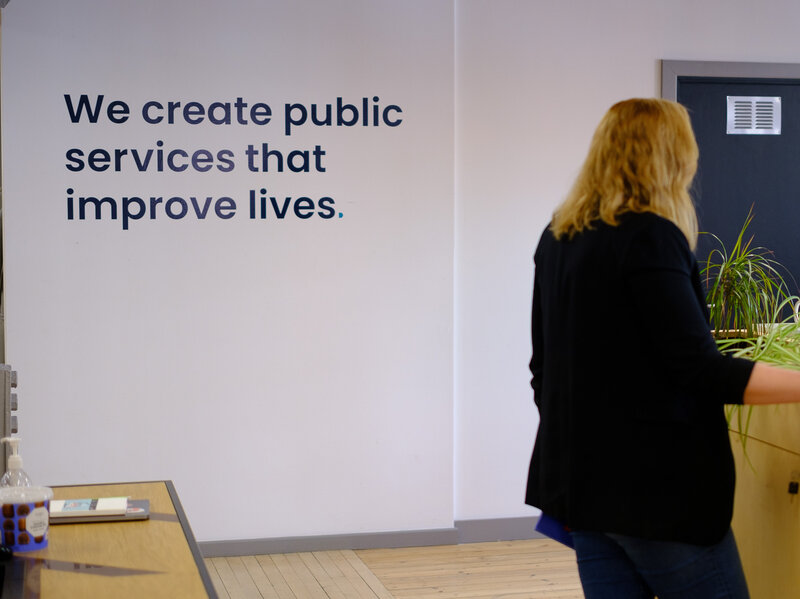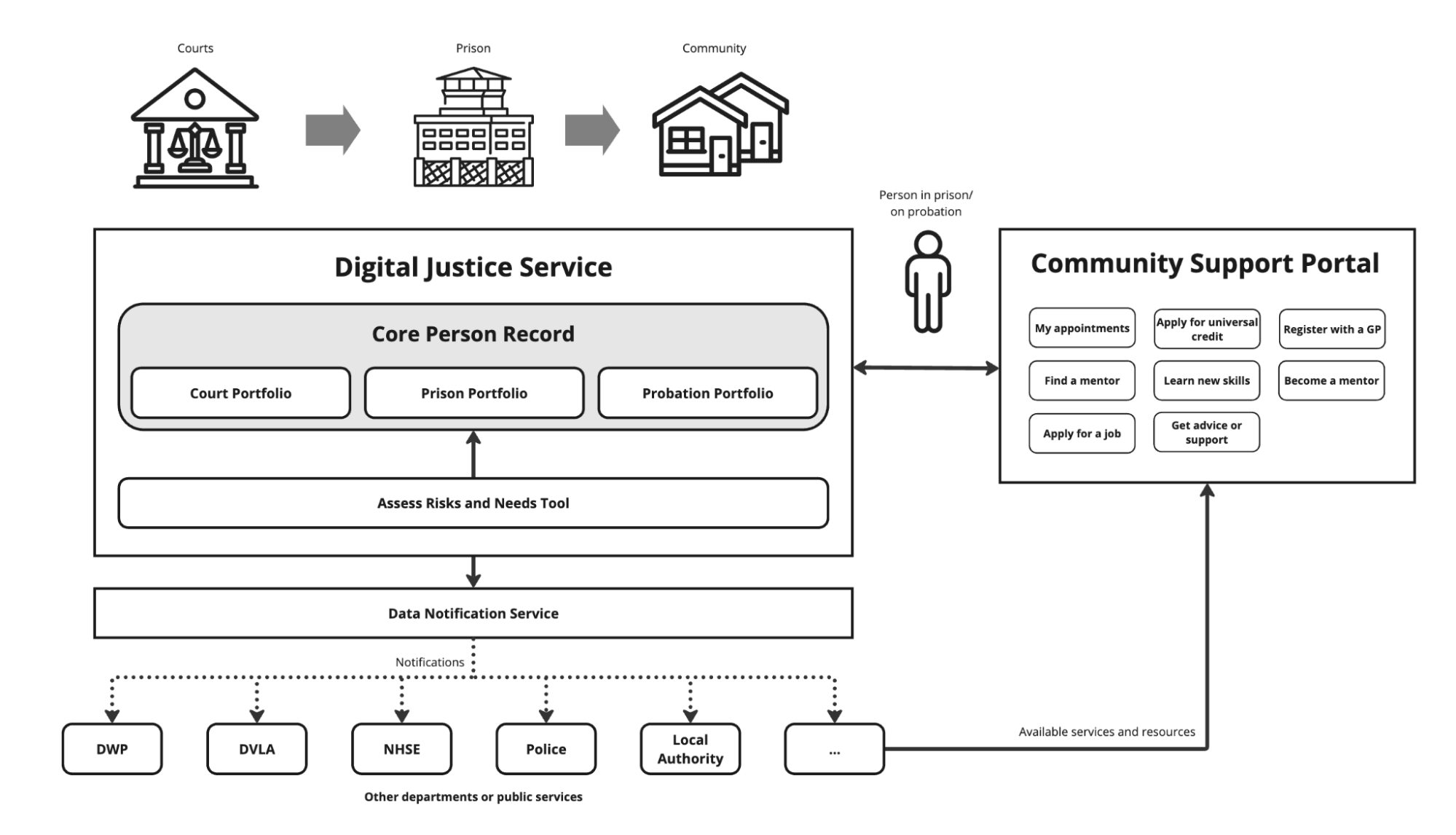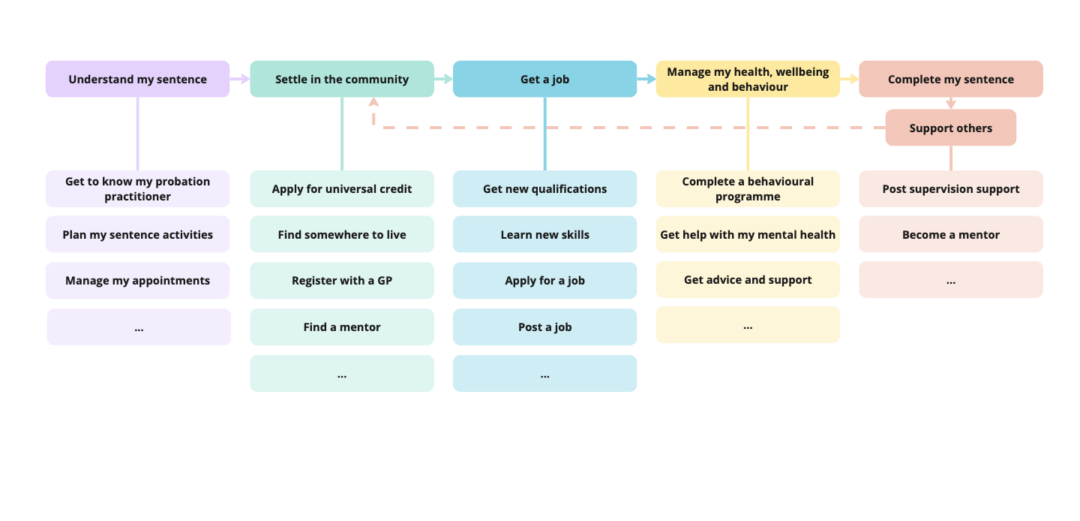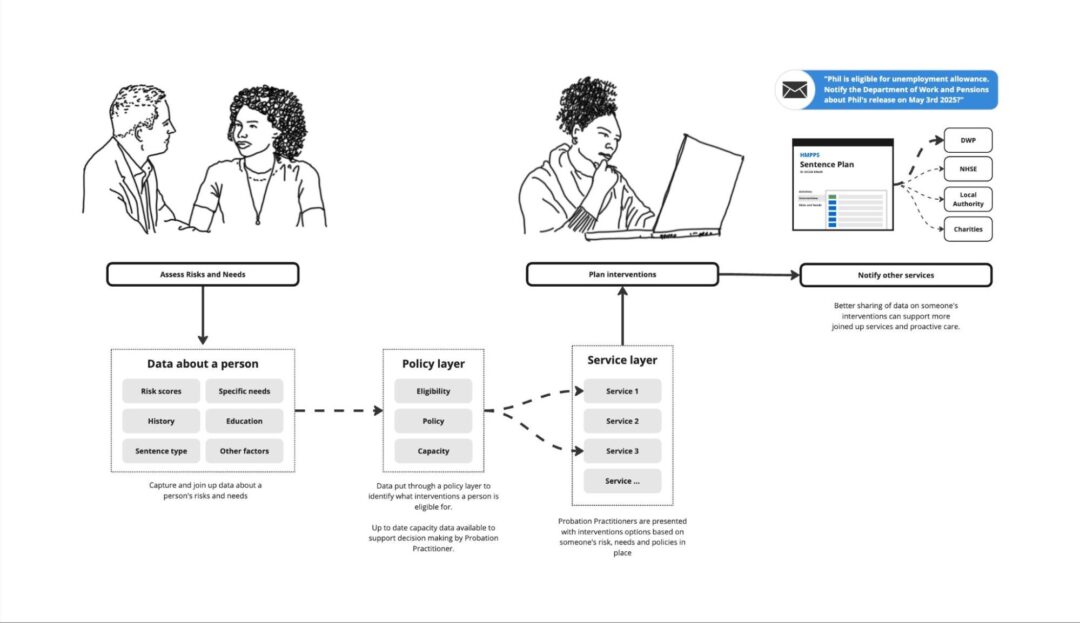Our vision for the future of probation services

All of this is possible now, but it needs organisations to agree to work together towards a shared primary outcome – reducing reoffending
As Kath said, there’s an opportunity to transform probation services.
HMPPS is focused on digitising existing services, something many teams are doing to address the legacy technology supporting their work. It’s a pragmatic approach to improving things for front-line staff. It’s good and important work, but it’s piecemeal.
To radically change things for probation staff and the people they support, needs a holistic vision for how these services might connect. Together with a focus on a shared outcome: reducing reoffending.
A whole-service approach
The current separation between services means lots of duplication and, at worst, missed opportunities. At a time when the public need to know that people who are released from prison aren’t likely to reoffend.
Making sure the right support is provided for accommodation on release, education or other interventions is a critical part of that.
Services can sometimes be built in isolation with an incomplete view of the needs of users, either the offenders themselves or probation staff. This can result in significantly overlapping services, which is inefficient, with data stored across multiple locations which increases the risk of inaccuracies.
A transformed approach to reducing reoffending means looking at how the whole journey works.
For someone at risk of reoffending, it means bridging the gaps between different teams and organisations. For probation staff, it means presenting a joined-up view of what’s possible by showing which services a person in the Justice System is eligible for and currently receiving.
Reducing the admin burden
When it comes to delivering the desired outcome – less reoffending – this means conversations can focus on what support will work for a given person and making sure interventions are targeted in the areas they need to be. Replacing time spent navigating different systems and case lists.
Any service that provides this joined-up view should also be able to do some of the heavy-lifting. Saving probation staff time by taking what’s known about an individual and suggesting appropriate support packages.
This is about using data effectively to automate eligibility searches and matching results across all rehabilitation services. It should mean the most effective, available interventions are recommended for each person.
The impact of robust data
These kinds of approaches need a strategic, robust approach to data. Some of the questions we’d be asking are:
- What information will be needed throughout someone’s journey through the Justice System?
- What do we need to store long-term?
- What relationship does that data have to the interventions and opportunities available?
Good quality data should be the norm. It’s possible to do much smarter things with digital services built on a foundation of reliable data.
Probation staff should be using their expertise to fine-tune recommendations, rather than starting from scratch. This also makes it quicker and easier to test the effectiveness of new policies and interventions, matching them to their intended beneficiaries and providing data on their impact.

How a Digital Justice Service could work
Starting with a person-centred view
The ownership of policies to prevent reoffending is currently dispersed, just as services tend to reflect organisational structures. This makes it hard to see what’s most effective as interventions designed to help someone are looked at one-by-one.
Leaving custody is the kind of life-changing event Richard Pope writes about in Platformland. Each individual needs to navigate several government bodies (and possibly charities) and understand where they are in those various systems.
A whole-service approach would mean starting instead, with a view of the person and building out a plan for rehabilitation from there.

Probation journey from a person on probation’s point of view

How HMPPS products and services could be organised to support this journey
The next generation of services to support probation staff could start by setting the foundations: automatically applying for essential interventions, showing the menu of what’s possible on top of that, and producing the data needed to understand the effectiveness of different solutions.

Mock-up of a next-generation back-office for probation staff
All of this is possible now, but it needs organisations to agree to work together towards a shared primary outcome – reducing reoffending. It also needs a culture in government that supports teams doing the hard work of whole-service renewal.
We’re encouraged by what we’ve seen in DSIT’s blueprint. In the case of probation services, the potential gains are huge for people re-entering society and the communities they’re returning to.